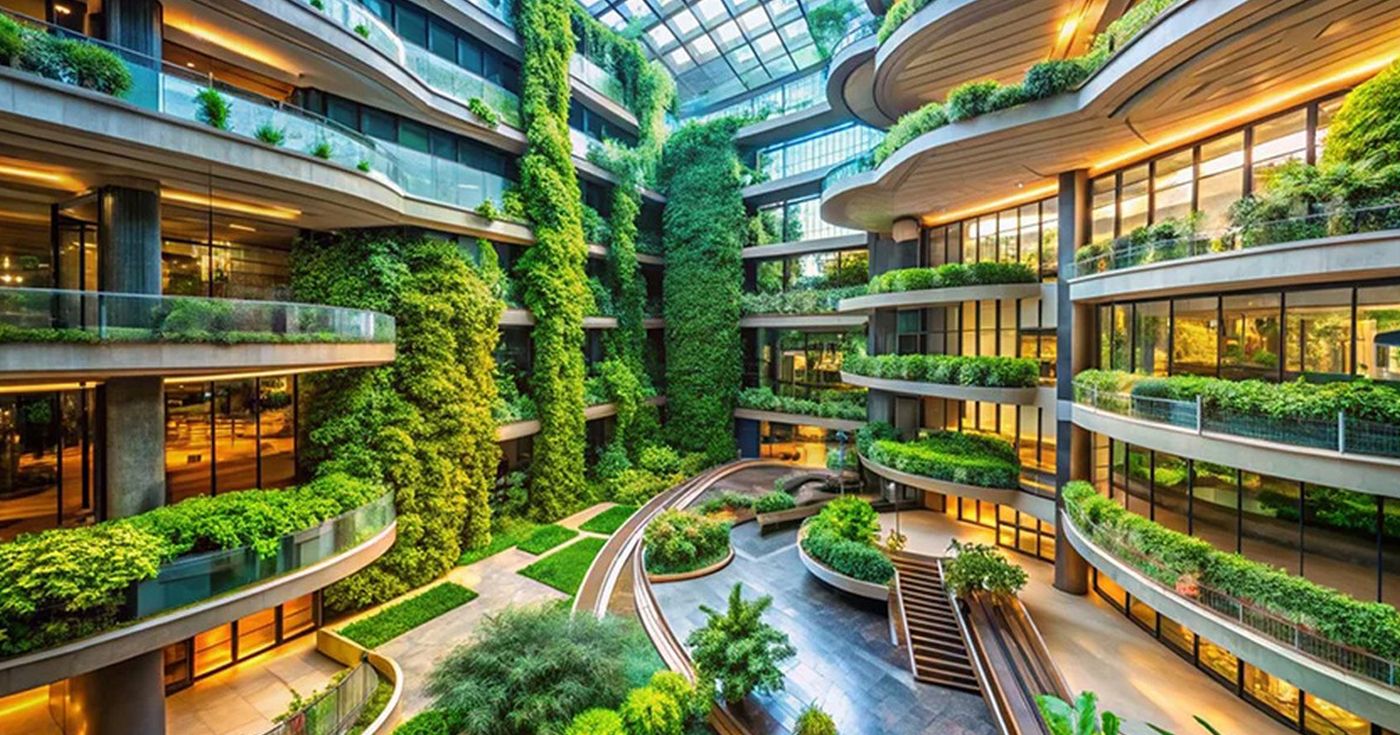As we navigate through 2024, the architectural scene is ever more defined by sustainability. The sense of urgency towards climate change, married with a growing awareness of environmental impacts, is catalyzing architects toward innovative practices that elevate ecological balance and human well-being. This all-encompassing overview explores and evaluates the latest trends in sustainable architecture, focusing on developments from Q3 and Q4 of 2024, and highlights recent research papers, state-of-the-art technologies, and expertise from leading sustainable companies endeavoring to integrate energy efficiency, material circularity, and regenerative design into architectural paradigms.
Sustainable Architecture Becomes the emerges as the key of the design
Sustainable architecture is no longer an abstract; it is the core principle guiding modern design. In 2024, buildings are being conceived with a focus on minimizing environmental impact through multiple approaches, which are as follows:
Natural ventilation: Natural ventilation is a sustainable approach to maintaining comfortable indoor climates by using natural forces like wind and thermal buoyancy, reducing reliance on mechanical systems.
Key innovative ventilation types
- Wind-Driven Ventilation: Utilizes pressure differences created by wind to facilitate air movement.
- Stack Ventilation: Relies on temperature differences, where warm air rises and escapes, drawing in cooler air.
Eco-friendly Materials: The utilization of recycled and repurposed materials is becoming standard. Architects are increasingly incorporating materials like reclaimed wood, recycled steel, and bio-based composites to reduce resource depletion and pollution during construction.
Key Innovative Materials
- Geopolymers: These are inorganic polymers formed by the reaction of aluminum-silicate materials with alkaline solutions. Geopolymers offer high durability and thermal resistance while utilizing industrial waste products, significantly lowering their carbon footprint compared to traditional cement.
- Biochar-Based Bio plastics: Developed by startups like Made of Air, these materials are made from agricultural and forestry waste. They capture more carbon dioxide than they emit, making them carbon-negative and recyclable, suitable for various applications, including building facades.
- 3D-Printed Mycelium: This innovative method uses mycelium grown from waste materials, such as coffee cups, to create load-bearing structures. The process not only recycles waste but also produces edible mushrooms, contributing to urban agriculture.
- Translucent Wood: Achieved through a chemical process that removes lignin, translucent wood is strong, lightweight, and energy-efficient. It serves as a renewable alternative to glass and plastic in windows and solar panels.
- Carbonated Wood: This material enhances the properties of wood by treating it with carbon dioxide, improving its strength and durability while sequestering carbon.
- Self-Healing Concrete: Incorporating bacteria or special polymers, this concrete can repair its own cracks, extending the lifespan of structures and reducing maintenance costs.
- Light-Generating Concrete: This innovative concrete can generate light through embedded photoluminescent materials, potentially reducing the need for artificial lighting.
- Pollution-Absorbing Bricks: These bricks are designed to absorb pollutants from the air, improving urban air quality while serving as traditional construction materials.
- Transparent Aluminum: A ceramic alloy that combines transparency with exceptional strength and durability, transparent aluminum is used in security applications and has potential for broader architectural uses.
- Biologically Produced Furniture: Made from sustainable materials like mycelium and agricultural waste, this furniture is both functional and eco-friendly, showcasing innovative design in the furniture sector.
Energy Efficiency: A new design prioritizes and underscores energy-efficient systems such as solar panels, geothermal heating, and advanced insulation techniques. These innovations not only reduce operational costs but also significantly reduce carbon footprints.

